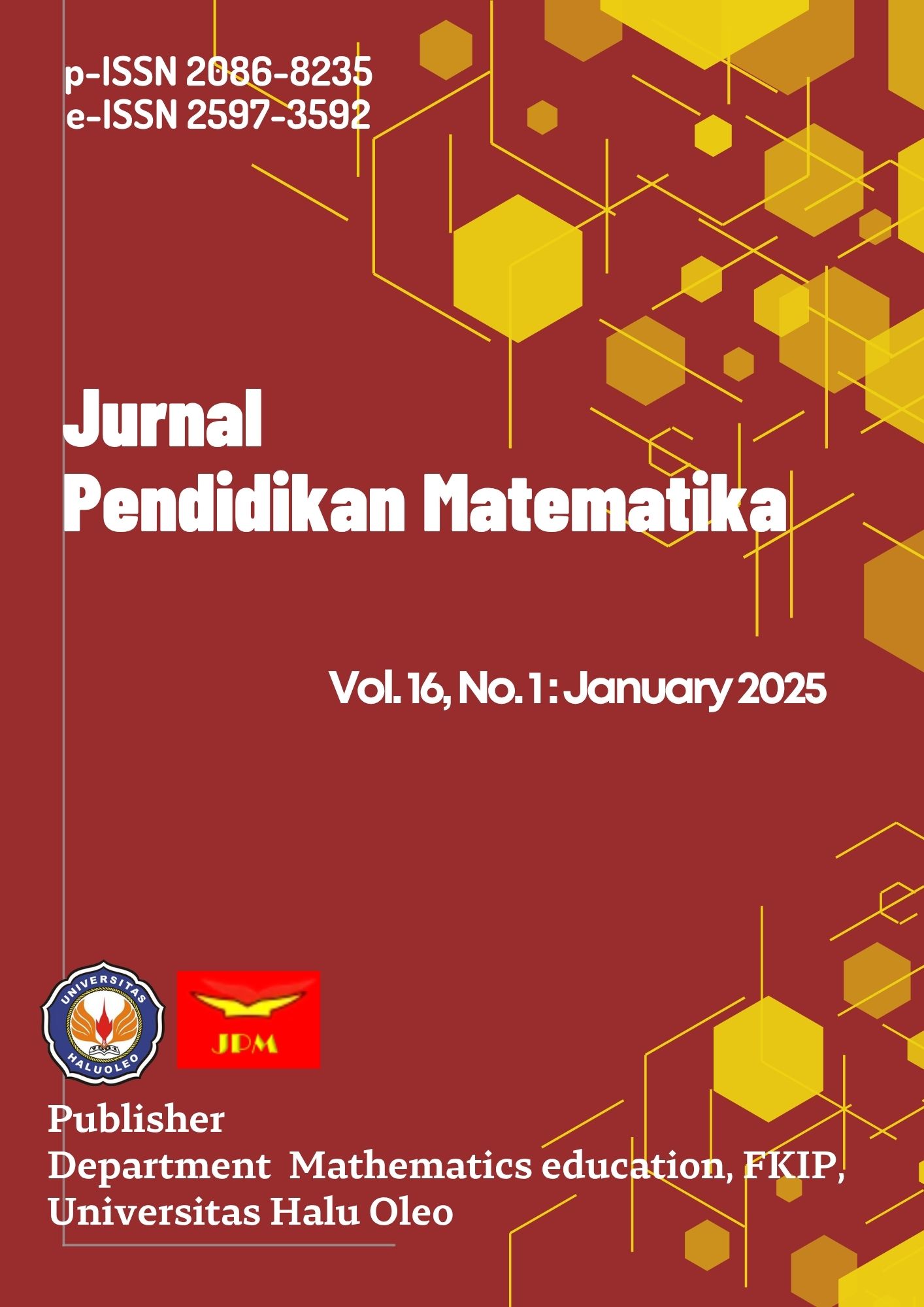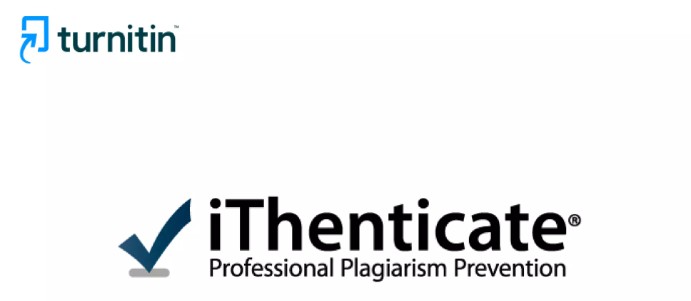Exploration of Ethnomathematics in Betawi Batik Motifs for Teaching Plane Geometry
DOI:
https://doi.org/10.36709/jpm.v16i1.243Kata Kunci:
betawi batik motifs, ethnomathematics, plane geometryAbstrak
Batik is one of Indonesia's cultural heritages that must be preserved. Batik has different characteristics and philosophies in each region, one of which is Betawi batik. Betawi batik has various characteristics and philosophies in each motif which, if examined more deeply, are related to flat shapes or mathematical concepts. The relationship between culture and mathematics is also known as ethnomathematics. The purpose of this research is to explore the concept of flat shapes in Betawi batik motifs. The research method used is a qualitative method with an ethnographic approach. This research uses human instruments, namely the researchers themselves, where everything that happens in the field will be recorded by researchers using exploration and observation guidelines, digging and analyzing all documents found and presenting them in the research results. The result of this study is that in Betawi batik motifs there is a concept in the form of flat shapes. The flat shapes found in this type of Betawi batik motif are triangles, squares, rectangles, rhombuses, kites, trapezoids, and circles. The results of this study are related to the process of learning mathematics in schools and can be used as learning materials at the primary and secondary school levels.
Referensi
Abdullah, A., & Rahmawati, A. (2021). Eksplorasi Etnomatematika Pada Batik Kayu Krebet Bantul. UNION: Jurnal Ilmiah Pendidikan Matematika, 9(2), 163–172. https://doi.org/10.30738/union.v9i2.9531
Afifah, D. S. N., Putri, I. M., & Listiawan, T. (2020). Eksplorasi Etnomatematika pada Batik Gajah Mada Motif Sekar Jagad Tulungagung. BAREKENG: Jurnal Ilmu Matematika Dan Terapan, 14(1), 101–112. https://doi.org/10.30598/barekengvol14iss1pp101-112
Bishop, A. J. (1991). Mathematics education in its cultural context. In M. Harris (ed.). School Mathematics and Work. Academic Press. https://doi.org/10.1007/978-94-017-2209-4_4
Carel, G., Jusniani, N., & Monariska, E. (2021). Kemampuan HOTS dalam pembelajaran metakognitif ditinjau dari persepsi siswa. Pythagoras: Jurnal Pendidikan Matematika, 16(2), 204–216. https://doi.org/10.21831/pythagoras.v16i2.37926
Cresswel, John. , W. (2015). Educational Research, Planning, Conducting, and Evaluating Quantitative and Qualitative ((Penerjemah: Helly Prayitno Soetjipto dan Sri Mulyantini Soetjipto). Yogyakarta: Pustaka Pelajar.
D’ambrosio, U. (1985). Ethnomathematics and Its Place in the History and Pedagogy of Mathematics. Source: For the Learning of Mathematics, 5(1), 44–48.
Farhan, M., Apriyanto, M. T., & Hakim, A. R. (2021). Etnomatematika : Eksplorasi Uma Lengge Untuk Pembelajaran Matematika Di Sekolah. Jurnal Derivat, 8(2), 98–106.
Febrianti, T. S., & Afifi, F. C. (2022). Batik Jlamprang with Koch Snowflake and Koch Anti Snowflake Fractal Geometry using Desmos. Ethnomathematics Journal, 3(1). 40-50. https://doi.org/10.21831/ej.v3i1.48775
Ibrahim, S. S., & Napfiah, S. (2023). Studi Etnomatematika: Bangun Datar pada Motif Seni Rumah Budaya Sumba. Jurnal Ilmiah Matematika Realistik (JI-MR), 4(1), 102–111.
Iskandar, & Kustiyah, E. (2017). Batik Sebagai Identitas Kultural Bangsa Indonesia. GEMA, XXX(52).
Kusumowardhani, P. (2017). Identifikasi Unsur Visual Bentuk dan Warna yang Menjadi Ciri Khas Motif Ragam Hias Batik Betawi Tarogong Jakarta. Seminar Nasional Seni Dan Desain 2017 “Membangun Tradisi Inovasi Melalui Riset Berbasis Praktik Seni Dan Desain” FBS Unesa, 97–105.
Lestari, M., Irawan, A., Rahayu, W., & Parwati, N. W. (2018). Ethnomathematics Elements in Batik Bali Using Backpropagation Method. Journal of Physics: Conference Series, 1022(1). https://doi.org/10.1088/1742-6596/1022/1/012012
Mandini, G. W., & Hartono, H. (2018). Analisis kemampuan menyelesaikan soal HOTS model TIMSS dan kepercayaan diri siswa sekolah menengah pertama. Pythagoras: Jurnal Pendidikan Matematika, 13(2), 148-157. https://doi.org/10.21831/pg.v13i2.21234
Nisa, R. I. K., Dechandra, R. N., Maryati, W. E., & Hartati, S. P. (2023). The Position of Points, Lines and Planes in a Mosque Construction for Geometrical Visualisation. Ethnomathematics Journal, 4(1), 67–86. https://doi.org/10.21831/ej.v4i1.59929
Nurliastuti, E., Dewi, N. R., & Priyatno, S. (2018). Penerapan Model PBL Bernuansa Etnomatematika untuk Meningkatkan Kemampuan Pemecahan Masalah Matematis dan Motivasi Belajar Siswa. PRISMA, Prosiding Seminar Nasional Matematika, 1, 99-104.
Oktavianti, D., Hakim, A. R., Hamid, A., Nurhayati, N., & Mulyatna, F. (2022). Eksplorasi Etnomatematika pada Batik Jakarta dan Kaitannya dengan Pembelajaran Matematika. JKPM (Jurnal Kajian Pendidikan Matematika), 8(1), 29-44.
Richardo, R., Wijaya, A., Rochmadi, T., Abdullah, A. A., Nurkhamid, Astuti, A. W., & Hidayah, K. N. (2023). Ethnomathematics Augmented Reality: Android-Based Learning Multimedia to Improve Creative Thinking Skills on Geometry. International Journal of Information and Education Technology, 13(4), 731–737. https://doi.org/10.18178/ijiet.2023.13.4.1860
Rosa, M., & Gavarrete, M. E. (2017). An Ethnomathematics Overview: An Introduction. In Ethnomathematics and its Diverse Approaches for Mathematics Education, ICME-13 Monographs, 3–19). Springer International Publishing AG. https://doi.org/10.1007/978-3-319-59220-6_1
Rosa, M., Ubiratan D’, Daniel, A., Orey, C., Shirley, L., Alangui, W. V, Palhares, P., & Gavarrete, M. E. (2016). Current and Future Perspectives of Ethnomathematics as a Program ICME-13 Topical Surveys. Retrieved from http://www.springer.com/series/14352
Sari, T. A. M., Sholehatun, A. N., Rahma, S. A., & Prasetyo, R. B. (2021). Eksplorasi Etnomatematika pada Seni Batik Madura dalam Pembelajaran Geometri. Journal of Instructional Mathematics, 2(2), 71–77. https://doi.org/10.37640/jim.v2i2.1032
Siddiq, M., & Salama, H. (2019). Etnografi Sebagai Teori dan Metode. KORDINAT, XVIII(1), 25–48.
Sirate. (2012) . Implementasi Etnomatematika Dalam Pembelajaran Matematika Pada Jenjang Pendidikan Sekolah Dasar. Jurnal Lentera Pendidikan, 15(1), 41-54.
Soedarwanto, H., Muthi’ah, W., & Maftukha, N. (2017). Kajian Ekspresi Seni dalam Ragam Hias Batik Betawi. NARADA, Jurnal Desain & Seni, FDSK-UMB, 5(1), 67–79.
Sulaiman, R., Husain, A. H., & Sulaiman, R. (2019). Appreciation of Siri Dungun Paintings in Ethnomathematics Context. International Journal of Academic Research in Business and Social Sciences, 9(9). https://doi.org/10.6007/ijarbss/v9-i9/6406
Wahyuni, A., Tias, A. J. W., & Sani, B. (2013). Peran Etnomatematika dalam Membangun Karakter Bangsa. Seminar Nasional Matematika dan Pendidikan Matematika dengan Tema "Penguatan Peran Matematika Dan Pendidikan Matematika Untuk Indonesia Yang Lebih Baik, 114–118.
Widada, W., Herawaty, D., Falaq Dwi Anggoro, A., Yudha, A., & Kurnia Hayati, M. (2019). Ethnomathematics and Outdoor Learning to Improve Problem Solving Ability. 1st International Conference on Educational Sciences and Teacher Profession (ICETeP 2018), 13–16.
Widodo, S. A., Setiana, D. S., & Irfan, M. (2021). Etnomathematics: Batik Activities in Tancep Batik. Journal of Medives: Journal of Mathematics Education IKIP Veteran Semarang, 5(2), 305–315. https://doi.org/10.31331/medivesveteran.v5i2.1700
Unduhan
Diterbitkan
Cara Mengutip
Terbitan
Bagian
Lisensi
Hak Cipta (c) 2025 Ririn Widiyasari, Kartika Nur Syahbani Wiratno

Artikel ini berlisensi Creative Commons Attribution 4.0 International License.







